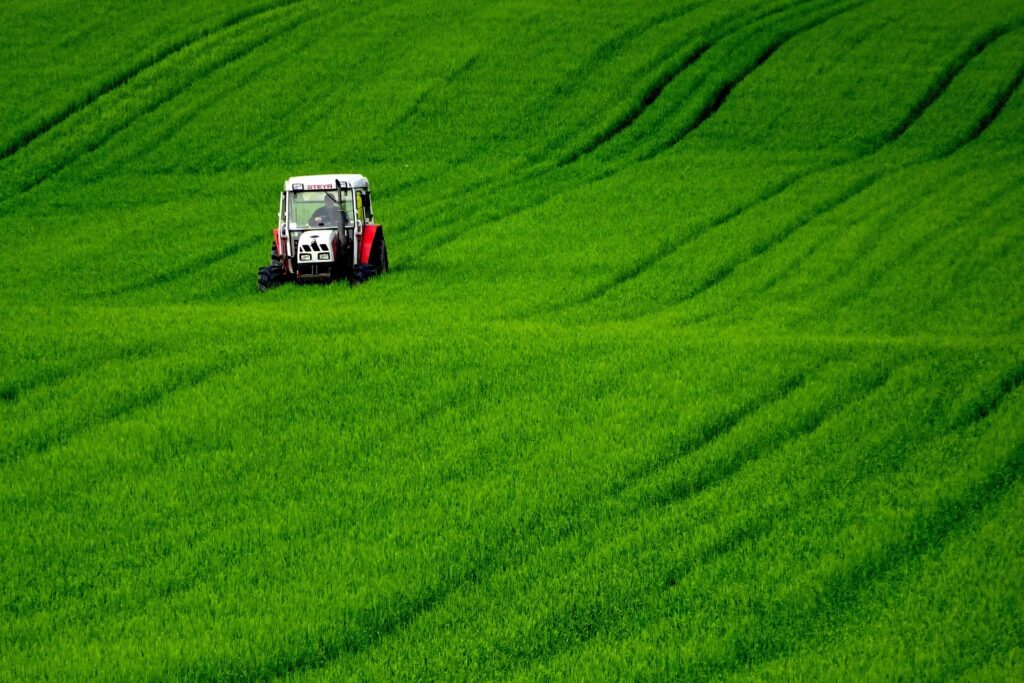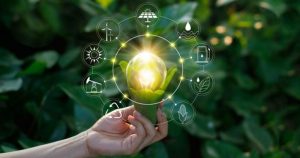Subsidies and Sustainability
Subsidies are a form of financial aid provided by governments to support certain groups or individuals. In the case of the agricultural sector, governments subsidize it by approximately €580 billion annually in the 84 countries where data exist, representing 67% of agricultural production value worldwide. There are different types of subsidies provided: direct payments, disaster assistance, export and input subsidies, and market price support, among others. These can be divided as being ‘coupled’ or ‘decoupled’ to output levels and input use, with most being the former. Decoupled subsidies, such as direct payments, have little effect on emissions as they do not impact output, whereas coupled ones, such as export subsidies and market price support, incentivize production and emission-intensive agriculture.
Agriculture contributes substantially to the climate crisis and to greenhouse gas emissions, such as through the overuse of fertilizers, conversion of land, cultivation of rice, and burning of crop residue. Agriculture accounts for 1/5 of the world’s greenhouse gas emissions, largely arising from the beef, dairy and rice industries. In the EU, agriculture is responsible for approximately 10% of emissions. These include long-lived greenhouse gases, such as methane and nitrogen dioxide, the latter of which can persist in the atmosphere for up to a century. Subsidies encourage this by creating a system where intensive farming is supported.
Globally, current subsidies result in both higher output and higher emissions. For example, subsidies for livestock production lead to increased demand for pasture and animal feed, driving deforestation and disrupting forests’ carbon absorption. They mainly benefit high-emitting animal products and negatively affect plant-based and low-impact foods, such as fruits and vegetables, which do not get similar financial support. Financial incentives can also influence which crops or sectors to invest in, which can limit the diversity of the food system. A vicious cycle is created, with intensive agriculture contributing to climate change, climate disasters leading to food price surges and, thus, a higher demand for subsidies.
The CAP: A Case Study
The EU, along with China, the US, Indonesia and Japan, is one of the largest agriculture subsidisers, with the Common Agricultural Policy (CAP) being responsible for implementing them. The CAP’s main objectives, since its inception in 1963, have been to ensure food security through stable food supply and prices, and to support rural communities. Since then, it has undergone major reforms, such as moving to direct payments for farmers and decoupling payments from production. In 2003, direct payments became tied to sustainability through a policy of cross-compliance and greening, although with mixed results. A decade later, a new reform saw 30% of direct payments become conditioned on green farm management practices. But thanks to the strong lobby of organized farm interests, the bar for accessing these funds has been low.
The European Commission estimates that €104 billion, approximately 25% of the CAP’s budget, goes towards sustainable policies. But, while the CAP has increasingly placed focus on protecting the environment, the impact has been debatable. These measures have not shown the ability to mitigate climate change and have been characterized as ‘environmentally inefficient’. Over the period 2005-2021, emissions from the EU agricultural sector declined by just 3%. On the one hand, the CAP has backed the reduction of fertilizer use and has provided support for limiting livestock, as well as championing agroforestry and afforestation. On the other hand, around 80% of the CAP’s budget goes towards the production of carbon-intensive animal-based food, and it has been criticized for supporting farmers who destroy peatlands and wetlands. Subsidies not only go to the richest farming regions in EU member-states, they also go to regions most responsible for pollution and contributing the least positive impact on biodiversity. This is due to payments being made based on the area of land, with no or few additional conditions.
Reaching Green Deal Targets?
Acknowledging that more work needs to be done to reach the 2050 climate targets, new changes came into effect for the period 2023-2027, to align agriculture with the Green Deal objectives. These include more payments being conditioned on environmental factors, the introduction of flexible eco-schemes to replace cross-compliance and greening requirements, and funding for innovative sustainable practices. However, there is still an absence of consensus over what constitutes a green CAP outside of the Green Deal initiatives. Notably, there is no EU legislation which sets out specifically agricultural emission reduction targets.
Despite the Commission’s plans, agriculture ministers have opposed any changes to tie farming closer with climate goals. The farmers’ protest last year led to the Commission watering down the environmental standards it had set, much to the disappointment of activists. These include small farms, meaning those under 10 hectares, being exempted from following environmental rules. Lobby groups, representing everyone from farmers to petrochemical companies, pharmaceutical businesses, and the meat-packing industry, are a major reason for this. They have fought to remove rules on transparent labelling, taxes on unsustainable products, references to links between health risks and intensive farming, and reduction of the use of pesticides and fertilizers.
In spite of political pressure, national governments and international organizations alike should focus on supporting small and young farmers, as well as those opting for organic and less demanding forms of agriculture. Direct payments could be transformed into needs-based payments, therefore shifting closer to social welfare, or conditioned on environmental services, such as protecting grasslands. Additionally, more effective forms of spending can be implemented, such as improving agricultural technology and developing rural infrastructure. However, without ambitious targets and political will, sustainable farming will continue to remain a distant goal.
References
Andrés, P. and Brzeziński, B., EU farm ministers reject push to reform CAP spending, POLITICO, 22 October 2024.
Balogh, J., The impact of agricultural subsidies on environmental pollution in the European Union, AgEcon, 2022.
Brzeziński, B., Billions in EU farm subsidies tied to greenwashing, POLITICO, 5 February 2025.
Cassou, E., The greening of farm support programs: International experiences with agriculture subsidy reform, Washington, D.C.: World Bank Group, 2018.
European Council, CAP funding rules 2023-2027, 31 January 2025 (last reviewed).
Hancock, A., EU’s new agriculture chief seeks more funds for small farmers, Financial Times, 10 December 2024.
Harvey, F., ‘Welfare for the rich’: how farm subsidies wrecked Europe’s landscapes, The Guardian, 2 November 2024.
Heyl, K., Ekardt, F., Sund, L. and Roos, P., ‘Potentials and Limitations of Subsidies in Sustainability Governance: The Example of Agriculture’, Sustainability 14(23), 2022.
Hood, L., EU subsidies benefit big farms while underfunding greener and poorer plots – new research, The Conversation, 21 August 2020.
Laborde, D., Mamun, A., Martin, W., Piñeiro, V. and Vos, R., ‘Agricultural subsidies and global greenhouse gas emissions’, Nature Communications 12(2601), 2021.
Passaro, F., Pulido, M. A. and Van Coppenolle, M., Repurposing EU Subsidies for an Effective Agrifood System Transition to Net Zero, Climate Bonds Initiative, 2024.
Shankar, P., Win, T. L. and Hekman, L., Lobbies undermine EU’s green farming plan, DW, 19 October 2021.
UN Environment Programme, UN report calls for repurposing of USD 470 billion of agricultural support that distorts prices, Press Release, 14 September 2021.








